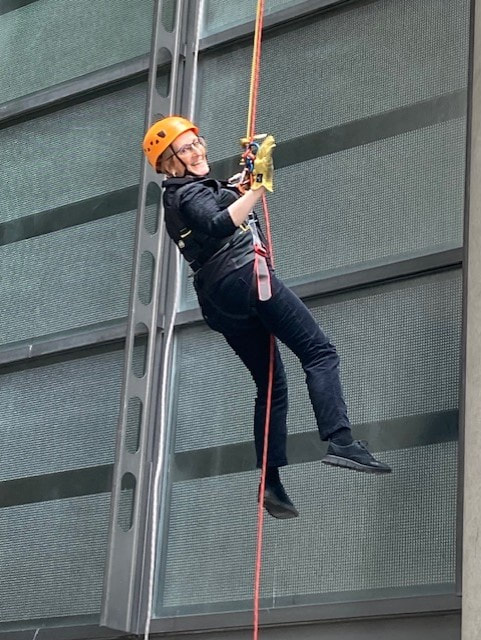 Abseiling down the Lloyd's Building for the Lord Mayor's Appeal Abseiling down the Lloyd's Building for the Lord Mayor's Appeal Funny how things can sometimes cluster together. So early July saw two annual conferences of organisations where I am the Chair (last year they were both on the same day which was very hairy). The London Road Safety Council is a cross London charity that is made up of representatives of all the 32 London Boroughs and the City of London including both elected members and road safety officers. I am the Chair. Operating for over 100 years it has championed the need to share ideas and programmes across boundaries in order to reduce collisions and build confidence for those who are vulnerable – being pedestrians, cyclists and motor cyclists. Transport for London is working towards Vision Zero whereby there will be no fatalities or seriously injured on the London roads by 2041. In 2022 there were 129 deaths and in 2023 to date some 57. That is slightly more than the number of homicides in Greater London. These numbers need to continue to reduce. At the Conference we heard from Sarah Bell the Traffic Commissioner for London about her role in licensing HGVs, buses, coaches and local bus services. We also heard from Prof Sir Chris Whitty the Chief Medical Officer and now on the Advisory Board of Active Travel England. Sir Chris advocated the benefits of active travel for health and well being and the need to break down the barriers perceived by many, preventing them cycling or walking. https://londonroadsafetycouncil.org.uk/chris-whitty-the-guest-as-lrsc-stages-106th-agm/ On 3rd July the Livery Climate Action Group held its conference at Merchant Taylors’ Hall and a full house had a packed programme of speakers and networking. Our keynote speaker was Emma Howard Boyd who is Chair of the Green Finance Institute and former Chair of the Environment Agency. She is now leading a review by the Mayor of London into the resilience of the capital and has urged us to respond to the call for evidence. More detail on the Livery Climate Action Group website. https://liverycag.org.uk/news-and-events/lcag-annual-conference-2023/ Aldermen need to stand for re-election every 6 years and Alderman Ian Luder CBE had served in Castle Baynard Ward for 18 years before retiring this year. Seven candidates stood for the role making the field wide open and very interesting to the objective observer. I was objective but not an observer as I took the role representing the Lord Mayor as Returning Officer at the Ward Mote prior to the poll day and then at the electoral count. For the first time the Ward Mote was live streamed and you can view that event on the City Corporation’s YouTube channel. https://www.youtube.com/watch?v=u91gnzGm_M8 The turn out was only 25% of the electorate and the winner was Martha Grekos. Elections are a good time for people living and working in the Ward to learn more about the work of the Corporation and their Council members and if you are interested to know more then the City’s website has information on the elections and standing for a role here https://www.cityoflondon.gov.uk/about-us/voting-elections I have long wanted to take part in an abseil and the Lord Mayor’s Appeal launched a day to abseil down the iconic Lloyd’s Building. It was exciting and scary at the same time and I am delighted to have raised over £2,000 towards the Lord Mayor’s Appeal. Thanks to all who donated. For many after dinner speaking is too scary but I have had lots of experience and so now enjoy the chance to talk about a topic of importance to the organisation or to me. Apart from the Conferences, I also spoke at the Wheelwrights’ Livery lunch and Basketmakers’ dinner. I know that the Livery can be a very discerning audience and so hope that a mixture of serious purpose bookended with some lighter material and even the odd joke should find favour with most listeners. They both seemed to go well. One of my external roles is on the Council of the 1st Battalion London Guards, formerly the London Regiment. They have a close link to the City as one of the Privileged Regiments allowed to march through the City. With the redesignation, their new colours were presented at a moving ceremony at Buckingham Palace by their Colonel HRH, Prince Edward, the Duke of Edinburgh. It was an honour to be there to see the unit in all their splendour and active in many roles as reservists. https://www.army.mod.uk/news-and-events/news/2023/07/first-battalion-london-guards-receive-their-colours/ A highlight of any Lord Mayor’s year is the dinner with the Chancellor of the Exchequer. This year the Lord Mayor, Alderman Nick Lyons, was able to use the opportunity to announce the Mansion House Compact - being a commitment by some of Britain’s largest pension firms to allocate a minimum of 5% of defined contribution funds to unlisted equities by 2030. With the aim of unlocking over £50 billion of new capital by the end of the decade. A chance to give the economy a much-needed boost. Well done to Nick and his business colleagues. A selection of my other work this month is shown in the photos below.
0 Comments
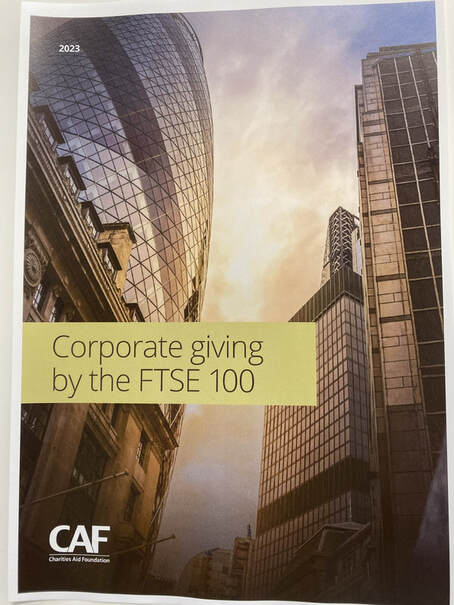 What price philanthropy? The Charities Aid Foundation keep a careful eye on giving – by individuals, trusts and foundations and corporates. Their latest report on corporate giving by the FTSE 100 updates earlier ones and shows that £1.85 billion was donated. However using these figures extracted in 2023, the total financial donations have remained unchanged since 2016. That means that in real terms the donations have declined by 17%. As a percentage this was a fall from 2.4% to only 0.8% of pre-tax profits. Within the FTSE 100 contributions differ so that some 24 donated at least 1% of their pre-tax profits - but that is two fewer than in 2016. The healthcare sector are the most generous whereby 5 companies donated 22% of the total contribution. The full report is here: https://www.cafonline.org/docs/default-source/giving-as-a-company/corporate_giving_ftse100_2023_report.pdf Being a Livery member it is interesting to compare these corporates to the (now) 111 Livery Companies of the City of London. Their report was produced in 2022 and review the financial giving and wider philanthropic support given by the Livery. I am pleased to say that the financial total was £75 million and this was indeed up 4.4% on the sum given in 2020 and a cumulative increase of 12% over three years. Whilst this detail was not shared in the report, it is the case that much of that came from a smaller group of the wealthier Liveries who give substantial sums from established charitable endowments whilst many other Livery Companies only receive gifts in year from the current membership which they then disperse. In any agglomeration there is this kind of disparity. https://www.cafonline.org/docs/default-source/giving-as-a-company/corporate_giving_ftse100_2023_report.pdf For corporates there is no compulsion to report publicly on these matters. Neil Heslop, the CEO of CAF, suggests that maybe this should be made mandatory (as it used to be) and that would align with the current transparency around ESG reporting. Liveries publish charitable accounts with the Charity Commission but these can be difficult to find with many Livery charities having different names to the actual Livery Company – for example named after a benefactor in that Livery. There has long been a drive from the sector for the Government to appoint a Philanthropy Champion. As a trustee of Beacon Collaborative this is something we, and others, have been advocating and we hope to see come to fruition soon. The appointment of renowned philanthropist Rory Brooks as a new Board Member at the Charity Commission is a good sign of interest in the quarter. A Government appointment would bring additional support and a chance to put philanthropy (however much or little) at the heart of our economy and our responsibility as individuals and corporates. 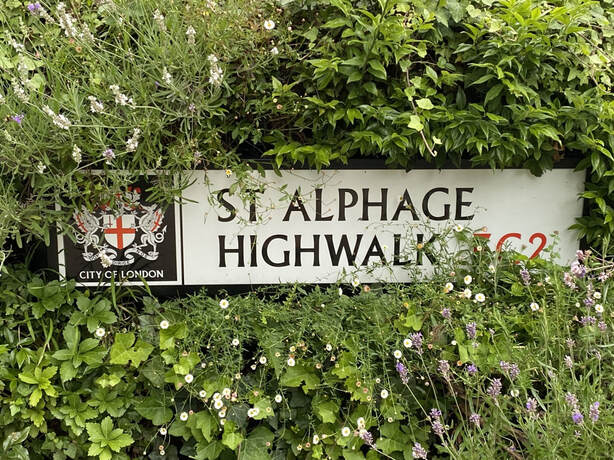 St Alphage Highwalk newly installed green pedway above London Wall St Alphage Highwalk newly installed green pedway above London Wall I was asked to take part in a podcast about the City of London's pedway system. Little did the broadcasters know that I had written an article about them in 2017 and reproduce the article here and append the podcast link. Pedways: pedestrian paradise or ponderous paths? - Streets Ahead | Acast From 2017: You may have noticed lots of elevated walkways or bridges spanning many of the City of London roads. Indeed, you may have used them to ease your crossing. That adjacent to Plaisterers' Hall stretches across London Wall from One London Wall to the highwalk that easily leads you to the Museum of London if you turn left or El Vinos (in 2017 occupying a bar) if you turn right - depending on your taste. The arrangement of these walkways is in fact called The City of London Pedway Scheme. It is a partial elevated pedway that evolved out of a plan to transform traffic flows in the City of London by separating pedestrians from street level traffic using elevated walkways. First devised as part of the post World War II reconstruction plans for London, it was put into effect mainly from the mid-1950s to the mid-1960s and eventually abandoned by the 1980s - until now. Versions of the plan had been under consideration since the 19th century, and given shape by the German Bauhaus movement, but the scheme was only given impetus in London after World War II, during which London had suffered severe bomb damage. Enthusiasts for the scheme saw an opportunity to put it into practice through the post-war reconstruction programme, and in 1947 architect Charles Holden and planner William Holford developed a blueprint that envisaged a network of first-floor walkways that would connect buildings across the City. By the mid-1960s, the City of London Corporation had incorporated the scheme into its development plan. Although no coherent network was ever defined, designers of new developments were required to incorporate first-floor access to the pedway network as a condition of being granted planning consent. As most of the network had not been built, this meant that many developments incorporated unused "dead space" at first-floor level and partial walkways that led to dead ends. In consequence, the scheme was unpopular with many architects. The plan had the backing of city planner Percy Johnson-Marshall who compared the scheme to Venice, the city streets were like canals and the pedway the bridges over them. In reality it meant offices had two sets of receptions, one at street and one at pedway level (ever tried to get into 125 London Wall?). Shops built at pedway level found it difficult to get deliveries, shops at street level had no customers. Poor design meant the pedways were windswept and prone to flooding. As fewer people used them people feared using them creating a cycle of decline. Buildings that were required to incorporate links to the pedway included in their heyday the National Westminster Tower, which incorporated a pedestrian bridge across Bishopsgate that was never used and is now demolished; the Commercial Union building, the Barbican, and Drapers' Gardens. By the mid-1980s, the scheme had effectively been discontinued. The reason for its ultimate demise were escalating costs and the increase in influence of the conservation lobby, which opposed the extensive redevelopment of the historic areas of the City. Not to mention concerns about security due to the additional access points. The pedway scheme only succeeded in establishing itself in areas that required extensive post-war reconstruction. The most extensive part of the network to be completed was in the Barbican Estate and surrounding streets. Indeed the clue to getting around the Barbican is to access all areas via the highwalks. The main entrance to the Museum of London is, to this day, at first-floor level. Indeed this is rather a disadvantage to the Museum as many people claim not be able to find the entrance - even though there are 6 well signposted points at ground floor level leading up to the highwalk by stairs, escalators and lifts. The new Museum of London site at Smithfield will be at ground floor level and will be much more permeable - maybe somewhat of a reaction to the current high level isolation. Pedways have now returned in style with the new development known as London Wall Place. This large new office development is a few hundred yards from the Hall towards Moorgate. The development threatened to cut off the Barbican residents from their previous high level traverse to the City and thus the planning conditions imposed required the developer to reinstate and improve the pedways. These weathered-steel beauties (see photo) are the first additions to the pedway network in many years. True, they are a replacement for a demolished walkway rather than an entirely new piece of infrastructure. But their attractive, sinuous form is a far cry from the utilitarian concrete spans they replace. A film was made in 2013 about the City of London Pedway and there is a link here to this interesting piece of history and architecture. https://vimeo.com/80787092. The Pedway: Elevating London is a documentary on the post-war redevelopment in the City of London - focusing on the attempt to build an ambitious network of elevated walkways through the city. Featuring interviews with professor of town planning Michael Hebbert (UCL), architecture critic Jonathan Glancey, former City planning officer Peter Wynne Rees and writer Nicholas Rudd-Jones (Pathways), the film explores why the 'Pedway' scheme was unsuccessful and captures the abandoned remains that, unknown to the public, still haunt the square mile. It worth watching and then setting out on foot to find the lost stairways. The gentle destruction of the pedways has driven the pedestrian to the pavements and the consequential conflict with traffic. The resolution to that conundrum is more traffic free or traffic-light areas and wider pavements. A future Bank on Safety scheme is planned at the busy Bank junction and more changes that will occur with the Barbican Ultra Low Emission Zone and Cultural Hub. All of which are planned to make the City more liveable. (2023 update - these are now all in place). One wonders how they will be viewed in 50 years' time - will they, like pedways, have given way to better architectural innovations? 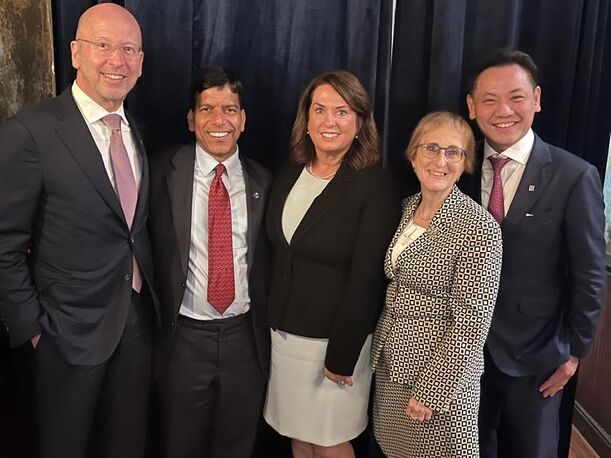 Attending the CIBC reception with President Victor Dodig, Alderman Prem Goyal, Foreign Minister for Newfoundland, myself and Wayne Lee Attending the CIBC reception with President Victor Dodig, Alderman Prem Goyal, Foreign Minister for Newfoundland, myself and Wayne Lee Flaming June it has turned out to be - but this has not stopped the City, nor me, in the many activities that mark the midpoint of the year and the Summer Solstice. As a woman in a predominantly (still) man’s world I can get labelled around the diversity issue and, whilst I have achieved so many firsts or even seconds as a woman in my career (first woman partner at my law firm and second woman Alderman), there is still a lot to do to encourage the widest of diversity in our work and provide opportunities. I was therefore pleased to attend the Air Pilots Livery Dinner and find not only a female headline speaker but also a significant number of senior women pilots. The speaker was Angela Stubblefield from the Federal Aviation Administration and I was also delighted to meet the President of the Royal Aeronautical Society, Kerissa Khan and CEO of Wizz Air Marion Geoffrey. If they cannot move the aviation world forward no one will. This idea had a lot of resonance in the City Corporation’s new flagship initiative called The City Belonging Project. https://belongingproject.city/ Launched at the Conservatory in the Barbican Centre, the City wants to connect and improve the links between the diversity networks in the City and its businesses which must help everyone feel part of this great City that I love. Another programme that has been around for a few years now is City Giving Day. https://www.thelordmayorsappeal.org/news-and-events/events-calendar/1089/city-giving-day-2022/ I was pleased to host and speak at the breakfast in Mansion House that is part of the regular links with existing and new businesses who are encouraged to sign up to participate. September 26th marks the day when businesses (including Liveries and other organisations) can celebrate their philanthropic work - be it fund raising or volunteering, such as mentoring and pro bono advice. The City businesses are always a big focus for me and I have made many visits in the recent weeks. CIBC, a Canadian Bank are based in Cheapside, but I also visited them in Toronto last year with the Lord Mayor. They were holding their annual reception in the Guildhall and I was pleased to speak and welcome them and, indeed, thank them for their amazing innovative work around sustainability. Please to engage with their CEO, Wayne Lee, and meet their President, Victor Dodig. As you will know that my passion is to create a green and sustainable City and I have been gradually growing the Livery Climate Action Group over the last 18 months. There is a great core of Livery colleagues helping and we now have 85 Livery Companies who are members and working towards a net zero square mile. More details are here on the website https://liverycag.org.uk/ We are holding an in person conference on 3rd July with further events and information online. It was aligned to this that I represented the City Corporation at the launch of their Solar Farm and have written a separate blog about this https://www.alisongowman.org/blog/visit-to-a-greener-future. The last week of June saw London Climate Action Week and many events all over Greater London. The City scooped the pool with two amazing conferences. See my separate blog https://www.alisongowman.org/blog/london-climate-action-week-2023 It is fascinating how environmental issues are such a thread of interest and importance. I am part of the City’s Skills for a Sustainable Skyline Taskforce that will be launching its report soon and are now working on how green skills in the construction industry can and need to be enhanced in order to meet the expertise needed to create environmentally sustainable buildings. https://www.cityoflondon.gov.uk/assets/Business/skills-for-a-sustainable-skyline-brochure.pdf I co-chair the group looking at policy issues and the need to influence decisions. Thus, I was pleased to attend the City’s’ Parliamentary reception on the terrace at Westminster and meet several MPs and Lords who were interested in the City’s stance on such matters. Our City MP Nickie Aiken chaired the event. A second reception on the Terrace with BusinessLDN drew a different crowd and a chance to catch up with the Lord Lieutenant of Greater London, Sir Ken Olisa. I also engage with a variety of Ambassadors to the UK as they are key links to the important overseas markets of our financial City. Following a lunch with the Mexican ambassador I was delighted to then receive an invite on board ARM Cuauhtemoc, a tall sailing ship that is the flagship of the Mexican navy and in dock at West India Quay. Very excellent Mexican food and music followed with some great Mexican weather. Its near neighbour the USA celebrated Independence Day a bit early with some wonderful fireworks and fun at Winfield House in Regents Park. Earlier this year we celebrated 600 years since the death of Dick Whittington and on 27th June we remembered 300 years from the death of Sir Christopher Wren. A polymath who was professionally a surveyor but also acted as architect, mathematician, astronomer and scientist. The Surveyors and Architects’ Liveries led the celebration in the presence of the Duke and Duchess of Gloucester. We were told the story of a man who shaped his age in the 17th century and still shapes the landscape in the 21st. |
Details
AuthorAlison Gowman Archives
January 2024
Categories
All
|
Follow Alderman Alison Gowman on Twitter: https://twitter.com/GowmanAJ
Alison Gowman: As an elected Alderman within the City of London: https://democracy.cityoflondon.gov.uk/mgUserInfo.aspx?UID=229
Privacy policy: https://www.alisongowman.org/privacy.html
Cookie policy: https://www.alisongowman.org/cookies.html
Terms & conditions of website usage: https://www.alisongowman.org/tandc.html
Alison Gowman: As an elected Alderman within the City of London: https://democracy.cityoflondon.gov.uk/mgUserInfo.aspx?UID=229
Privacy policy: https://www.alisongowman.org/privacy.html
Cookie policy: https://www.alisongowman.org/cookies.html
Terms & conditions of website usage: https://www.alisongowman.org/tandc.html

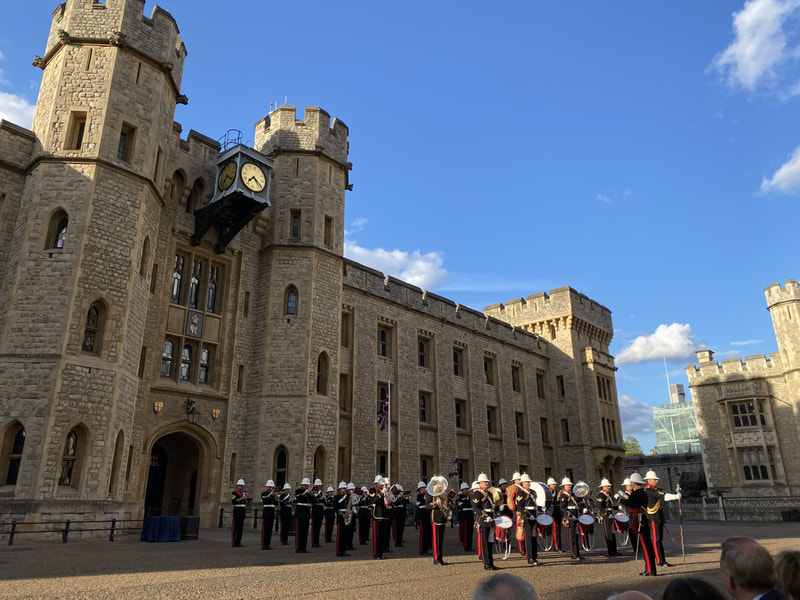
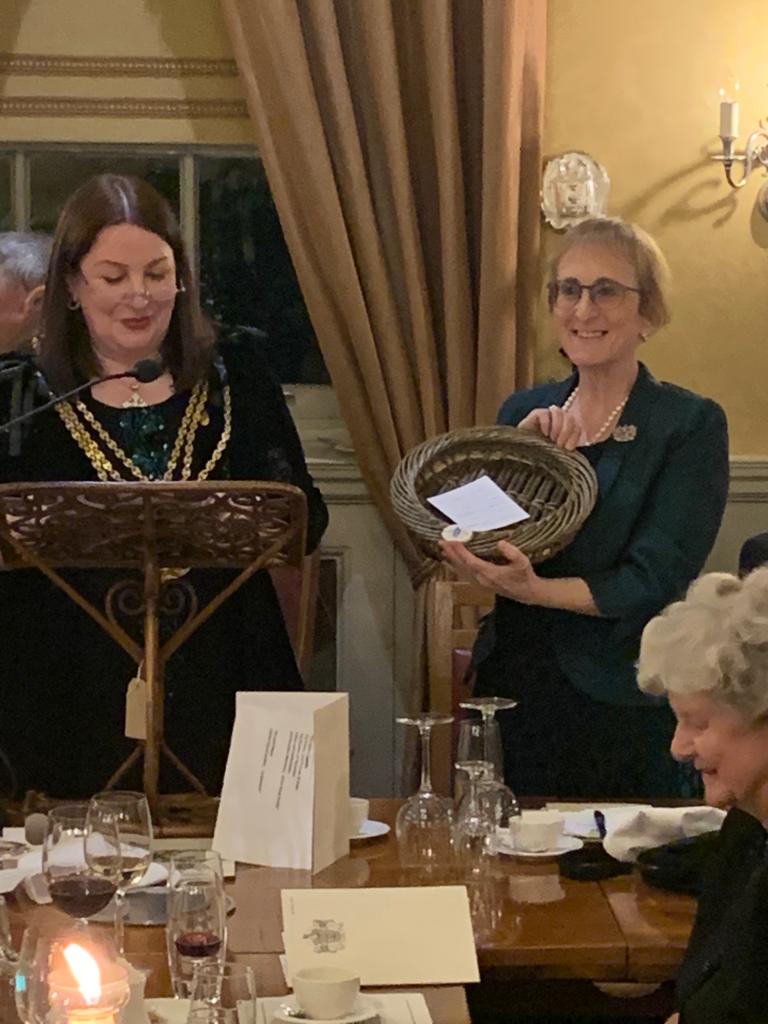
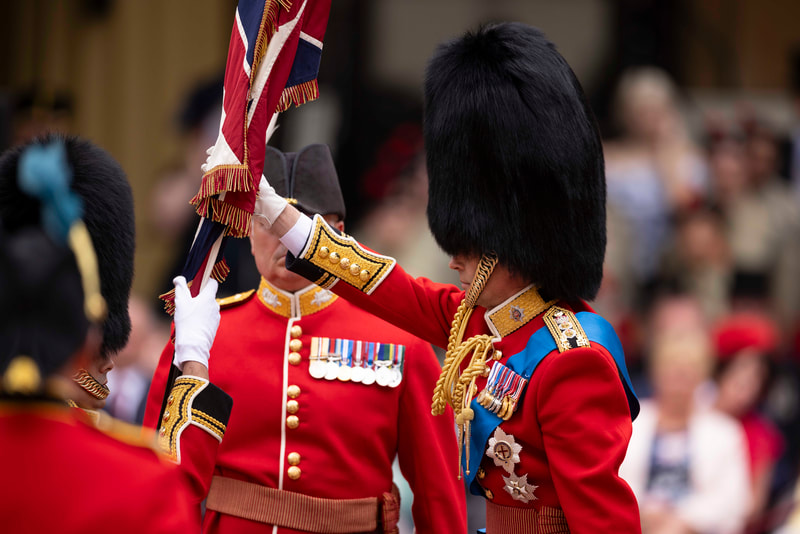

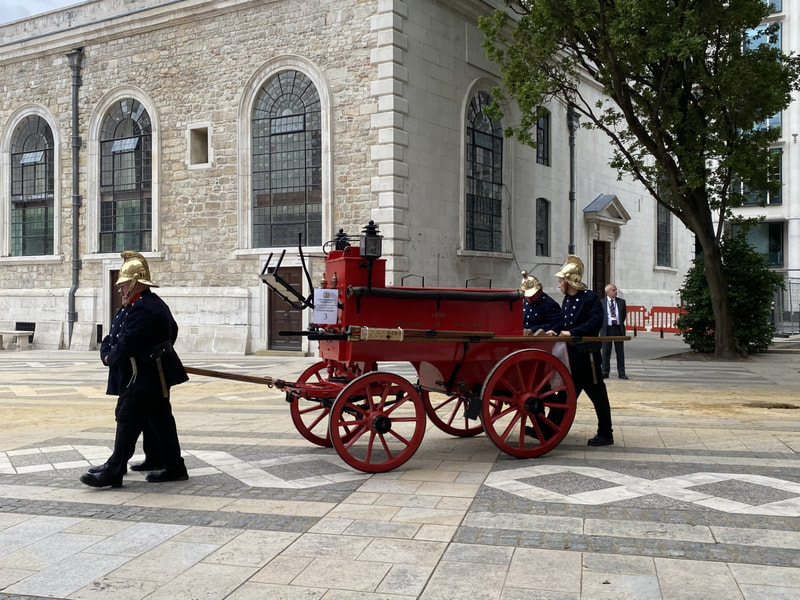
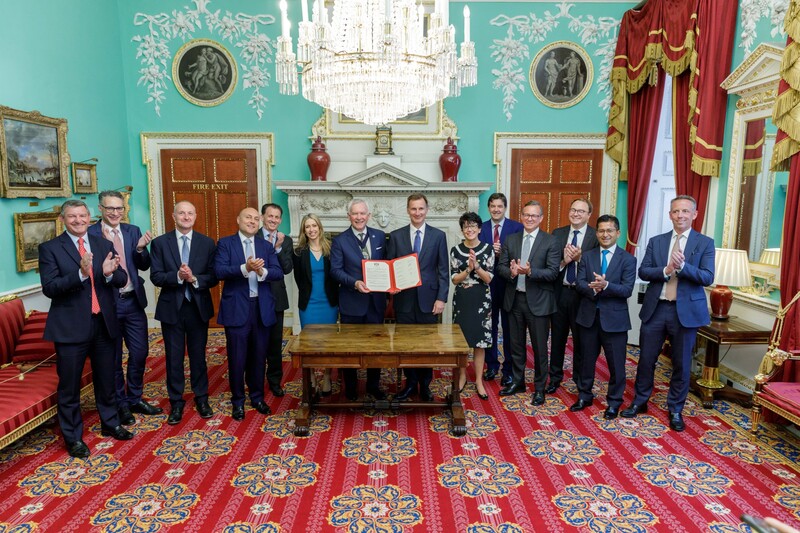
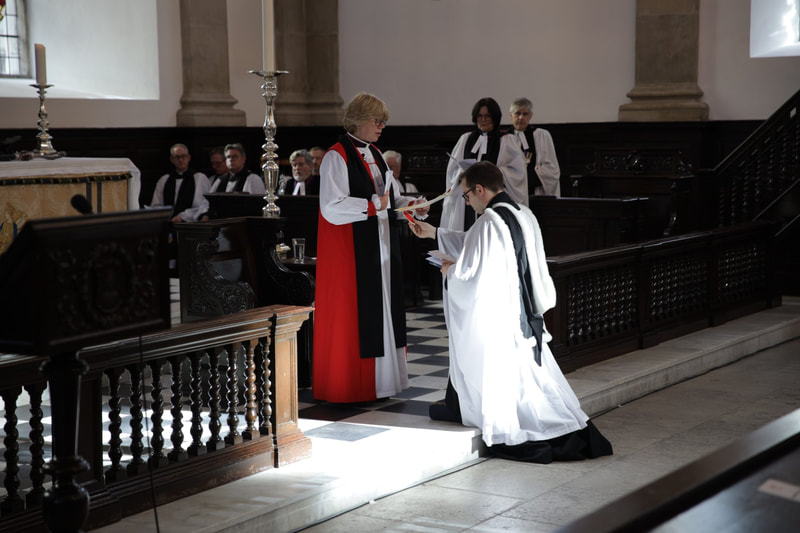
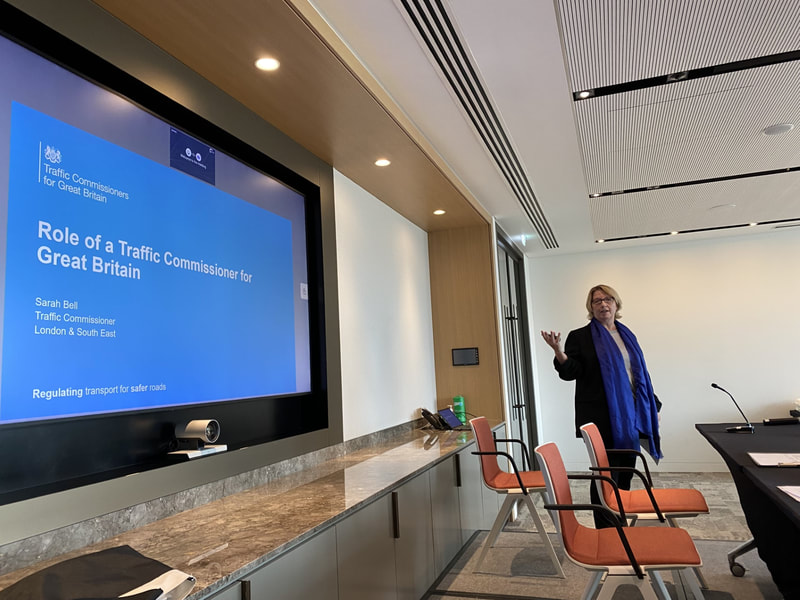
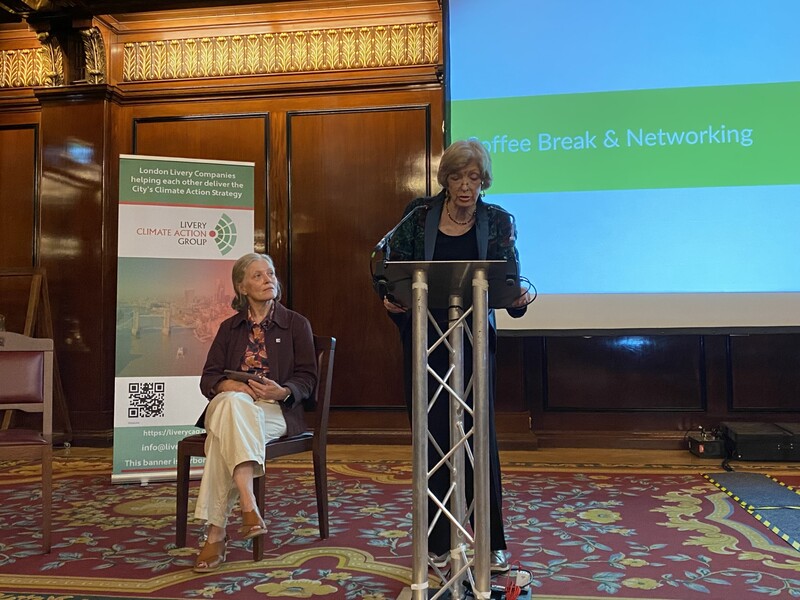
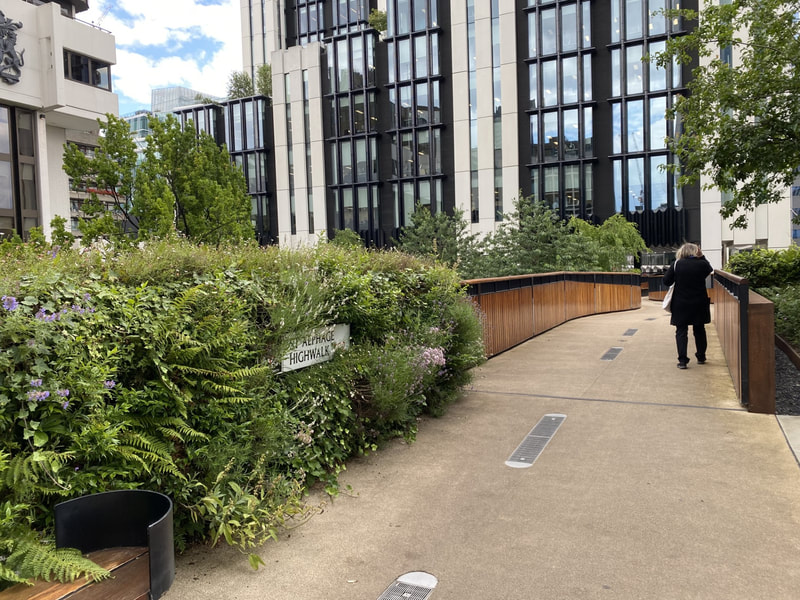
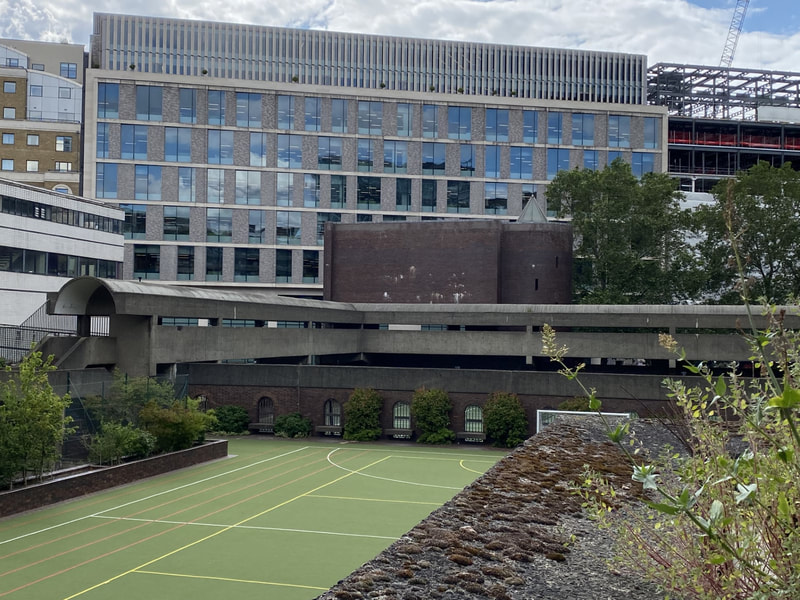
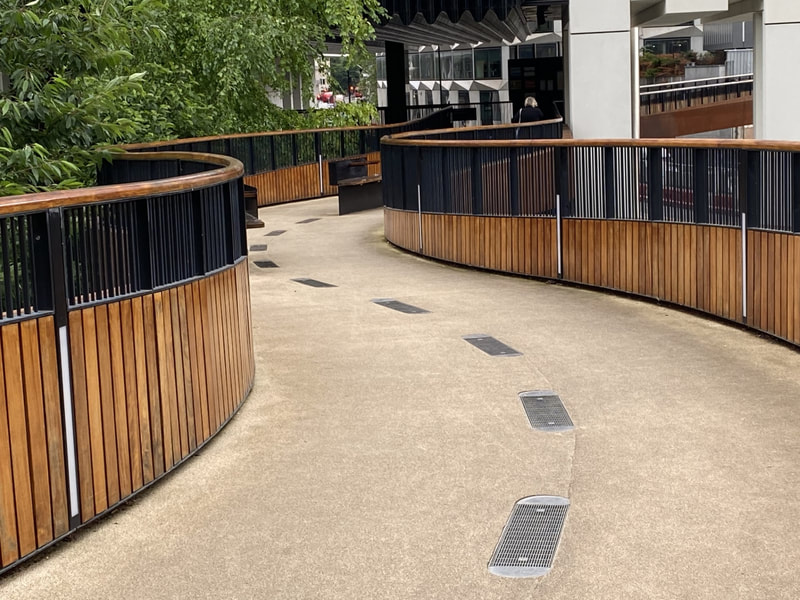
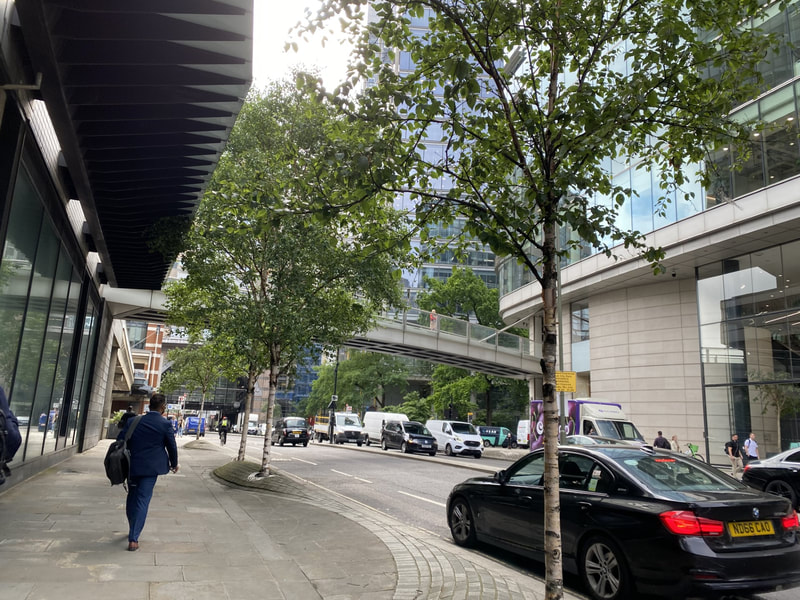
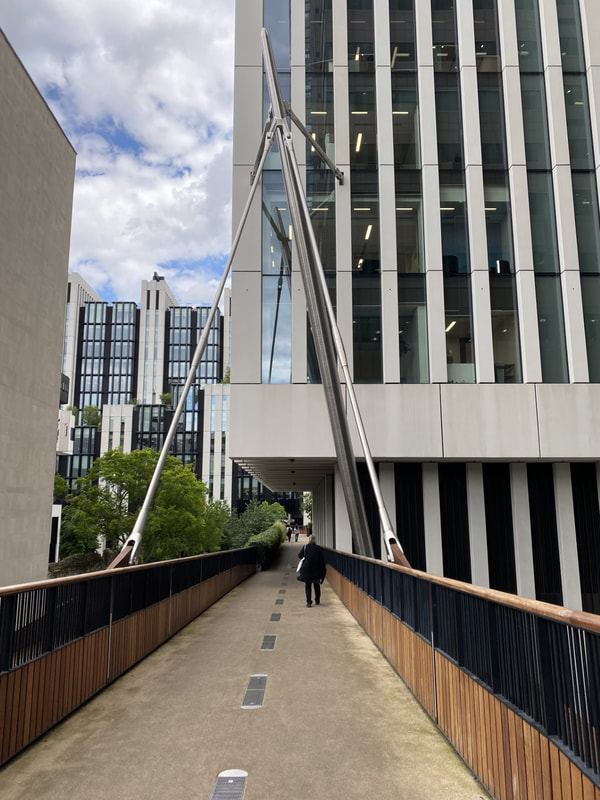
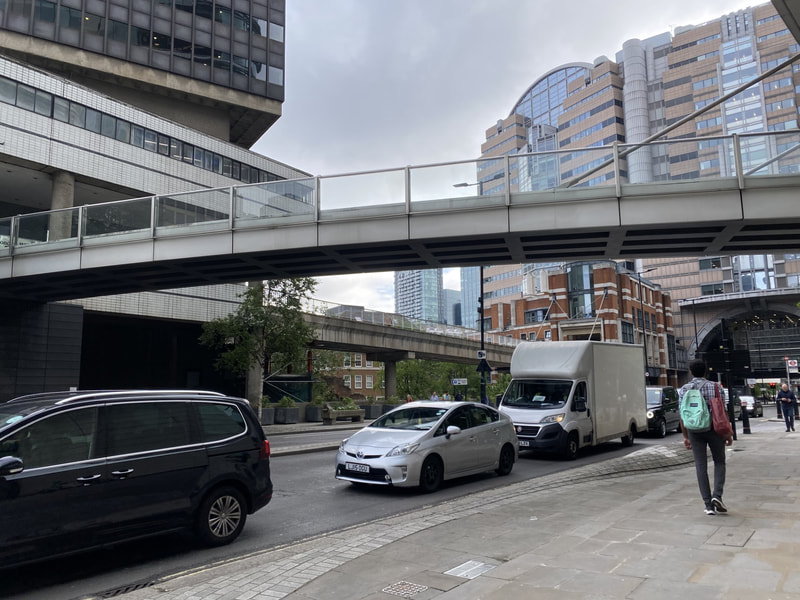
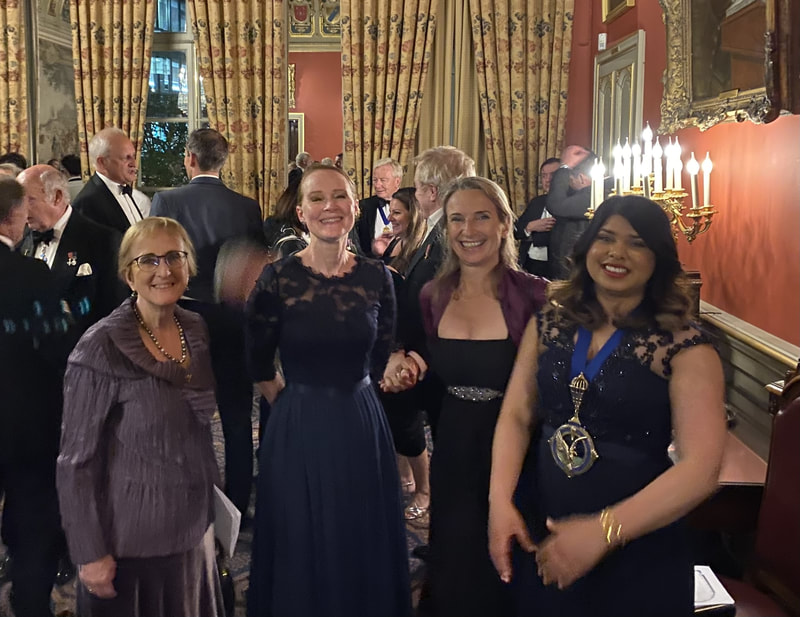
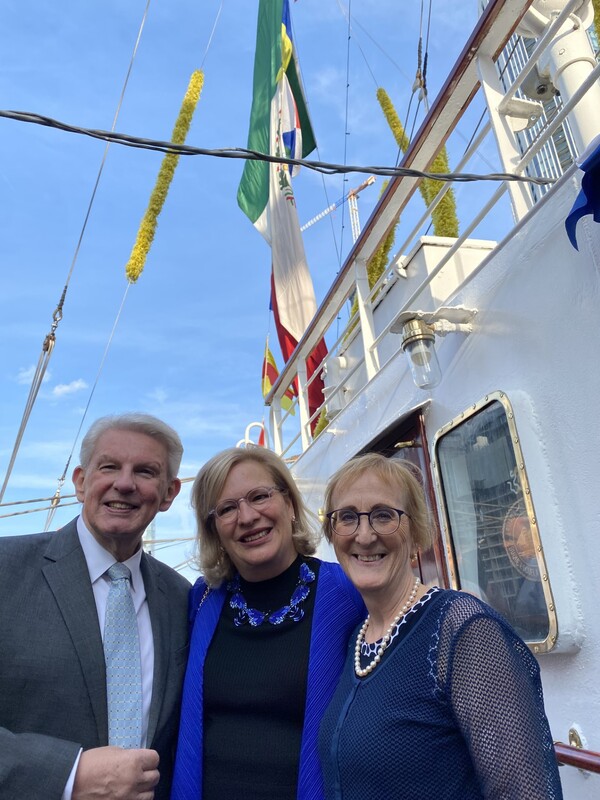
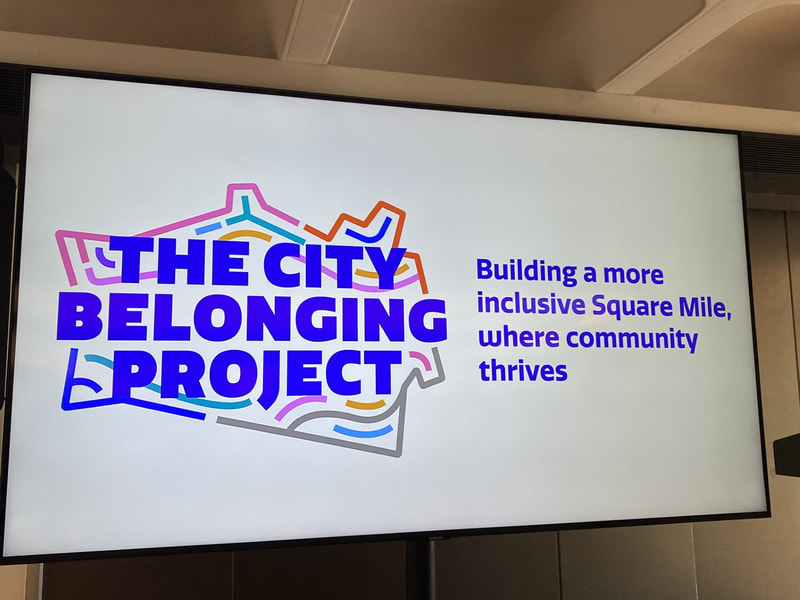

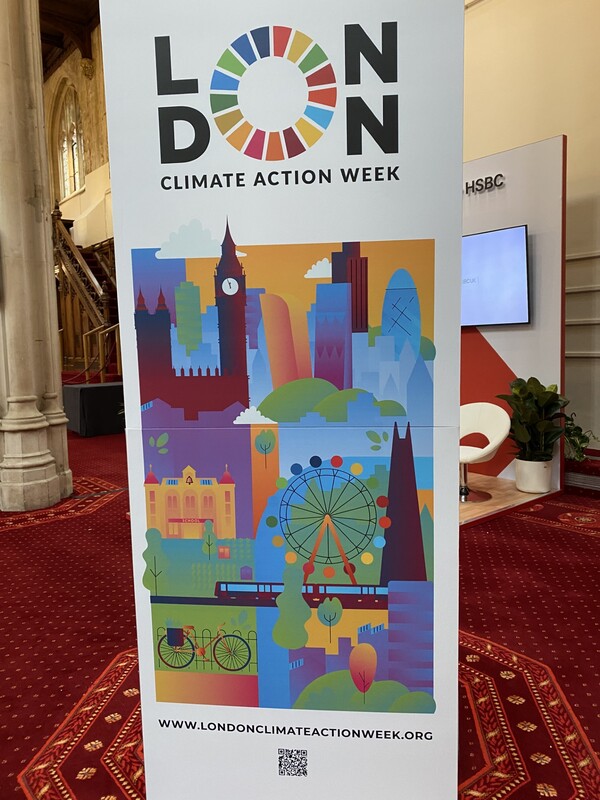

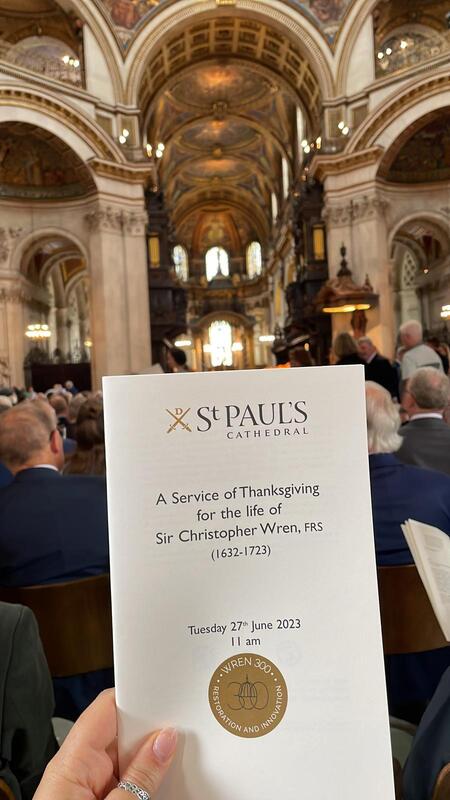

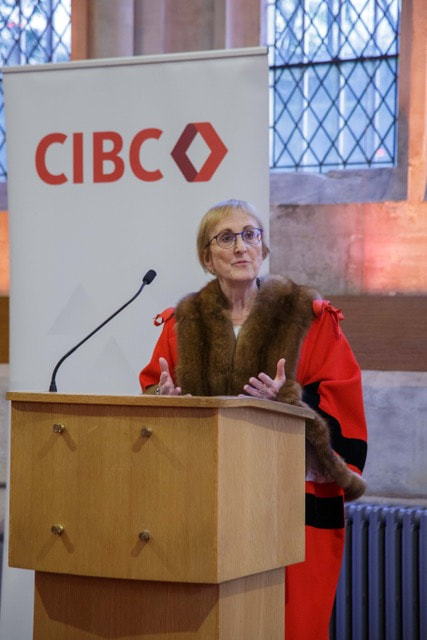
 RSS Feed
RSS Feed